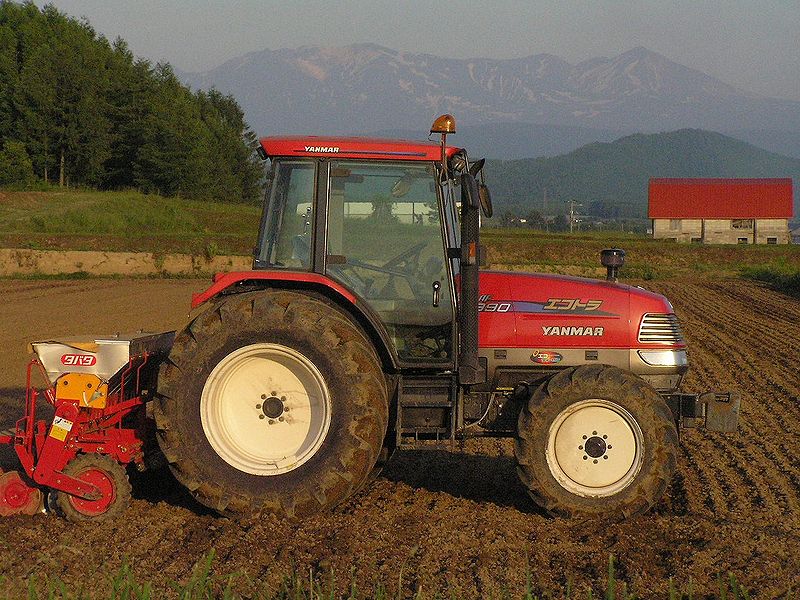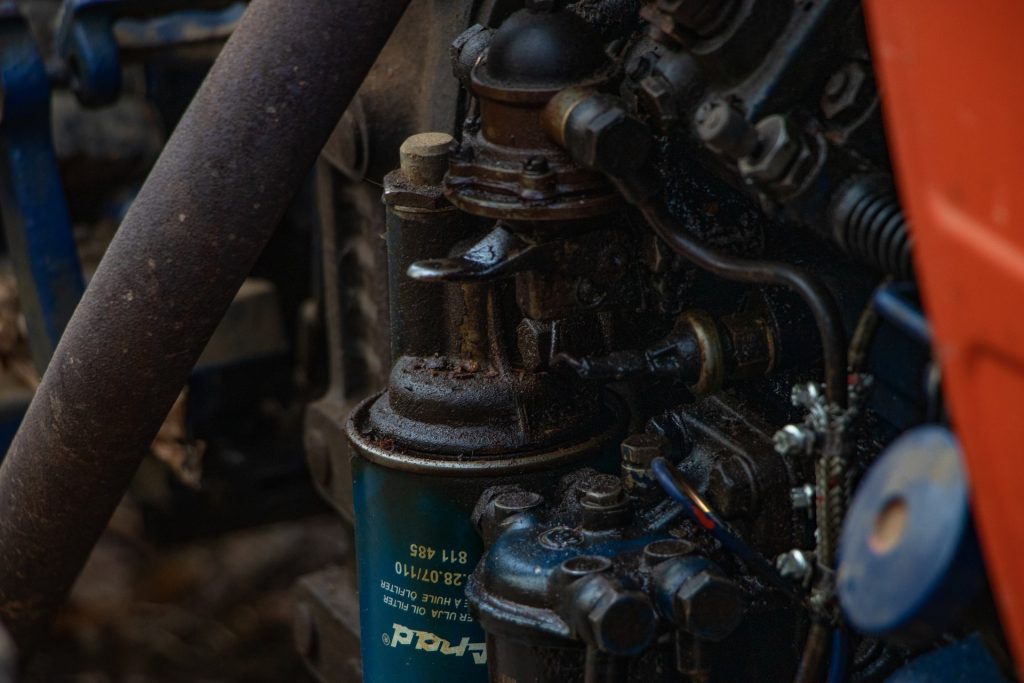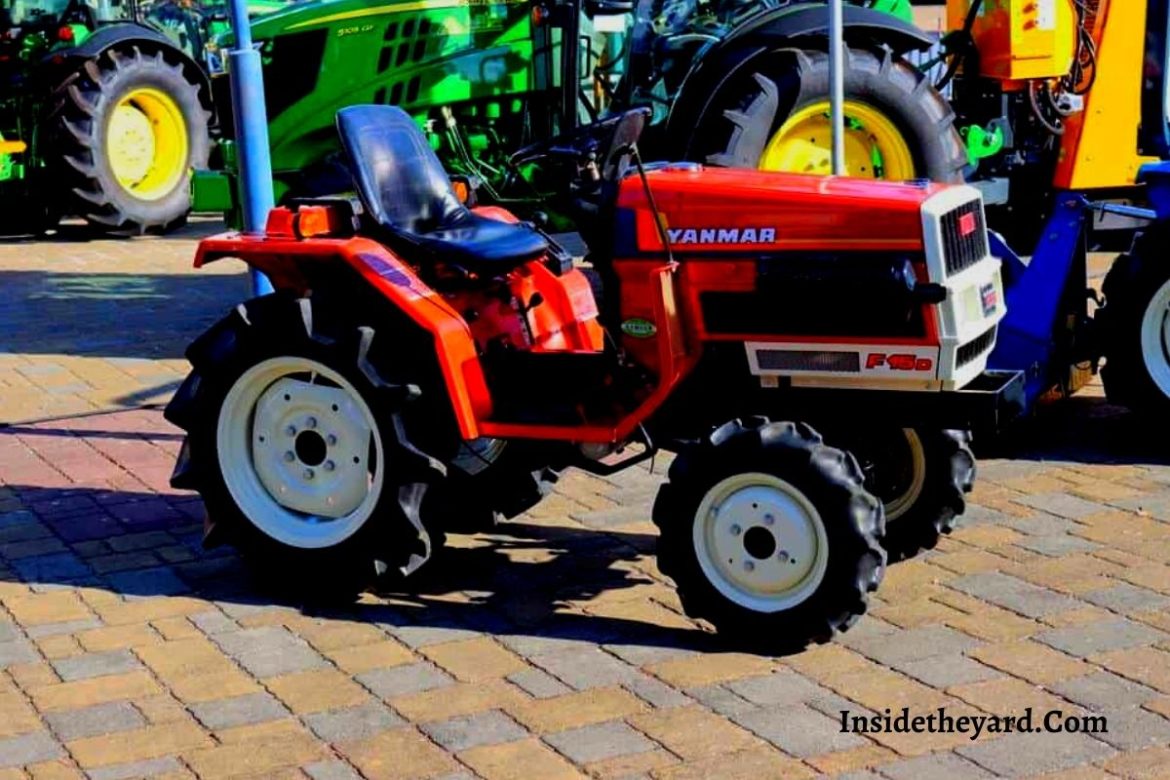So, you’ve decided to purchase a Yanmar tractor. It’s a good choice. This renowned brand is known for reliable, high-quality equipment that can help you tend to your yard.
However, before committing to a specific model based on advertised features, it’s worth examining which Yanmar tractor models to avoid.
Indeed, not all Yanmar tractor models live up to the brand’s reputation. Older Yanmar tractors are generally dependable and hold their value well over time, but there’s no guarantee you’ll make the right choice without spending much time researching the market.
To make your decision-making process smoother, we’ll present some specific Yanmar models you may want to think twice about before purchasing. We’ll also share some tips for finding the best option for your needs.
The List of Yanmar Tractor Models To Avoid

Let’s dive straight into the topic at hand — Yanmar models to steer clear of. These particular models have been identified due to their lack of future support, trouble replacing faulty components, or subpar performance.
- YM177: Due to its rarity, the YM177 presents quite a challenge for those seeking replacement parts.
- YM273: A distinct and hard-to-find model, the YM273 shares a few parts with more popular models. However, acquiring them can prove to be difficult.
- YM350: A model originally produced for the Korean market, the YM350 has a scarce pool of replacement parts.
- YM455: Similar to the YM350, the YM455 was also crafted for the Korean market. This exclusivity of its manufacturing origin gives little to no opportunities to get the necessary replacement parts.
- YM1110: Besides a limited selection of replacement parts, the YM1110 doesn’t share its most critical elements with other models.
- YM2200: For the YM2200, finding essential components like cylinder heads, intake or exhaust valves, and connecting rods can be quite challenging.
- FX235: The FX235 contains several quality Yanmar tractor parts. Still, potential users should be aware that most of the information about this model is written in Japanese, necessitating translation to understand the tractor’s specifications.
- F-Series (e.g., F16, F22, FX32): The F-Series may have some transmission and cosmetic parts unavailable on the market, even in Yanmar dealerships.
Things To Watch Out for When Buying an Old Yanmar Tractor
Should you decide to buy an old Yanmar tractor, here are a few things to keep in mind.
- The YM series of tractors were primarily manufactured in the 1970s and 1980s. So, if someone claims those to be brand new, be aware they might be looking to take advantage of you.
- Sellers may attempt to market Yanmar tractors as completely new by stating they have been entirely rebuilt at a Yanmar factory. However, while these tractors may have been rebuilt by another capable facility, they cannot be relabeled and sold under the Yanmar brand.
- If you are getting a smaller model, don’t go for anything less than 30 to 50 hours per year on average. Larger models will require more hours for optimal performance.
Tips for Buying a Used Yanmar Tractor

If you’re considering buying a used Yanmar tractor, there’s much to learn before making this investment.
Below, we cover vital information about Yanmar tractors, from power steering and maintenance to potential issues and testing tips. Let’s get started.
Keep an Eye Out for Abused or Improperly Maintained Tractors
You’ve done your homework and know which models to steer clear of. Now, it’s time to ensure the tractor you buy has been gently used and is in good condition.
Whether you’re looking at old or new models, assessing the overall condition of a Yanmar tractor before making a purchase is crucial.
A telltale sign of a potential money pit is leaking seals around the axles. Avoid tractors that exhibit this issue, as repairs could add up quickly. Instead, prioritize tractors where it’s evident the previous owners took proper care to maintain them.
Apart from checking the state of the seals, other aspects warrant scrutiny as well.
Look for uneven wear on the tires and check if the tractor has been overloaded or worked beyond its capacity. Properly functioning hydraulic systems are vital for optimal performance, so ensure there are no leaks or damage in that area too.
Moreover, be attentive to signs of rust or corrosion on the tractor’s body. While some wear is inevitable, excessive rust could compromise the structural integrity of essential parts such as the engine block, transmission casing, and chassis.
A little surface rust can be dealt with, but be cautious when dealing with deep-rooted corrosion.
Remember That Power Steering in Yanmar Models Is Rare
For many tractor users, power steering is the most valuable feature. If you are one of them, you might be disappointed to learn that most Yanmar models don’t have it.
This situation is due to the front axle design present in Yanmar tractors, which reduces the necessity for power steering.
If you manage to get your hands on a model with power steering, it won’t be a bad deal by no means. However, one limitation you will most likely face is getting steering unit components. These parts are scarce due to the limited use of power steering in Yanmar tractors.
Opt For Reconditioned Tractors Instead of Refurbished Ones
A fresh coat of paint and new seals are what some dealers often refer to as reconditioning. In many cases, it implies the tractor in question was in excellent condition and only needed minor cosmetic improvements.
Such refurbishments are entirely normal and should give you confidence in the quality of the equipment you’re purchasing.
However, it’s crucial to watch out for the type of refurbishing that is done on tractors that went through the worst. These machines have undergone significant damage, such as being submerged in water or catching fire.
The level of damage sustained by these tractors means they’ve been pieced back together from the remnants of a junkyard where they were initially sent. It’s best to avoid those.
Compatibility Issues
Refurbishing often involves piecing together components from various makes and models to construct a functioning tractor.
It could mean an axle or an engine from one model is integrated into another, while pistons, gears, and other components are combined in a patchwork manner to create a working machine.
Although this process may result in a tractor that appears outwardly functional, there could be underlying issues due to the mix-and-match approach of using parts from different models.
Poor Level of Workmanship

Another problem with refurbishing is that the workshops where the tractors are rebuilt have less skilled workers — a stark contrast to Yanmar’s proficient assembly line tech team.
The attention to detail and level of professionalism found in an authorized Yanmar facility is rarely, if ever, matched by these smaller operations.
A critical aspect that is often overlooked in these workshops is maintaining a clean environment.
A spotless work area prevents contaminants from damaging parts or compromising the tractor’s performance. Unfortunately, in many of these makeshift tractor repair shops, cleanliness standards are noticeably lacking.
Another concern is the blatant disregard for torque specifications during the rebuilding process. Proper torque ensures components are sufficiently tightened without causing undue stress, preventing premature wear or breakage.
Also, it is not uncommon for improper parts or substitutes to be used when reconstructing these tractors. It can lead to further mechanical issues down the line and create a high-risk situation for potential buyers.
In some cases, you might even discover that corners have been cut and parts have been modified to fit, creating a ticking time bomb just waiting to explode.
Test the Wheel’s Engagement & Loaded Arm Raising
This point mainly refers to compact 4-wheel drive tractors.
If you plan to invest in such a machine, it is crucial to ensure its front wheels engage properly. A perfect testing ground for this would be a hill or washout. These types of terrain will demonstrate if the tractor’s wheels are effectively gripping and maneuvering.
Another aspect to examine is the 3-point system. It should be able to raise and lower the load.
Bear in mind that without any load, even poorly-built compact tractors can effortlessly raise their arms. So, the real test for such a tractor would be with a load on it.
You can try standing on the arms and then attempt to raise them. Alternatively, using a type of implement, such as a plow or a bucket, is also an effective method.
The same goes for the Power Take-Off (PTO) system. Major issues within the PTO system may only be apparent with proper testing. For instance, tractors with a burned clutch won’t show signs of failing if no load is applied.
To thoroughly assess the PTO system, try hooking up an implement, such as a roller or mower. Doing so will provide an accurate reflection of its performance.
Do All Your Testing on a Cool Engine

Diesel engines tend to start more easily when they are warm. Testing their effectiveness in these conditions is less than ideal because potential issues might not reveal themselves.
As such, it’s crucial to ensure the engine is cool before giving it a start.
Dealers are notorious for using tricks like these to conceal engine problems from potential buyers. Another tactic involves using starting fluid to ensure a smooth start during a demonstration — which, by the way, is terrible for the engine.
Upon starting the engine, you might notice some clattering sounds and rough running. Don’t be alarmed; this is normal for small diesel engines commonly found in compact tractors.
The next thing you want to do is let the engine warm up a little bit more. As the engine warms up, these noises should begin to disappear, and the engine should start running more smoothly.
It’s also worth noting that a bit of smoke during the initial start or when under heavy load is common in diesel engines and doesn’t necessarily signal any issues.
That said, if the engine continues to smoke for an extended period, it could indicate a problem — especially if accompanied by a burnt oil smell.
Other Things To Inspect
When inspecting a vehicle, it’s worth paying attention to several key components. Here are a few guidelines to get you started:
- Check the effectiveness of the brake pedals.
- Inspect the charging system. When examining this element, make sure that even with the engine off, the battery or alternator light turns on when the key is in the ON position.
- If you notice the light isn’t coming on as expected, immediately test the charging system with a voltmeter. It should read between 13.5 and 14.5 Volts, indicating the system is functioning correctly. If you receive a reading outside this range, consult a mechanic to resolve any potential issues before they escalate.
General Problems Seen In Yanmar Tractors
Now that we’ve discussed a few essential factors to consider when purchasing a Yanmar tractor, it’s time to address common issues found in these machines.
The first one is difficulty starting during cold weather.
Many owners have reported that certain models, such as the 1500D, struggle to start smoothly in low temperatures. This inconvenience can be frustrating and time-consuming for those relying on their tractors for daily tasks.
Another concern for some Yanmar owners is their tractor failing to run efficiently while idling.
This problem has also been linked to the 1500D model and could present challenges for users who need their tractors to perform consistently. Typically, the culprit behind this issue lies with the starter and solenoid.
A Helpful Tutorial You May Need!
Wrapping Up
As an industry leader in manufacturing high-quality engines and industrial equipment, Yanmar strives to provide reliable machinery that meets a wide range of needs. However, like any other manufacturer, not all of their products hit the mark.
To make an informed decision when purchasing your Yanmar tractor, you need to do your research. Knowing which models to avoid can save you from a heap of troubles and costly repairs down the line.
Before leaping headfirst into a purchase, take the time to think through your needs and expectations thoroughly. Determine what you’ll be using your tractor for — be it agriculture, landscaping, or construction tasks.
At the same time, consider the size of the land you’re working on and the type of terrain you’ll encounter. Will you require any specialized attachments or additional features? Weigh the pros and cons of different models based on these factors.
You Can Also Read:
- Antifreeze to Water Ratio Chart for Tractor Tires: The Chart You Needed The Most
- 5 Probable Tym Tractor Problems You May Notice!
- Craftsman Lawn Tractor Transmission Problems
- Cub Cadet Lawn Tractor Cranks But Won’t Start- 6 Things Must Check
Frequently Asked Questions (FAQs)
Does Yanmar make good tractors?
Yanmar tractors have built a reputation for being reliable, sturdy, and long-lasting machines.u003cbru003eu003cbru003eThere have been some good and bad models produced throughout the company’s history. Nonetheless, Yanmar generally excels in manufacturing tractors that can withstand harsh conditions while maintaining their performance and appearance over time.u003cbru003eu003cbru003eOf course, the user’s maintenance and proper usage are crucial factors in determining their tractor’s longevity and overall performance.u003cbru003eu003cbru003e
Is a Yanmar tractor the same as a John Deere?
Not really! These two machines are not the same, but they share a significant component: the engine.u003cbru003eu003cbru003eJohn Deere compact utility tractors have engines produced by Yanmar due to their reputation for exceptional compactness, efficiency, and quality. So, while they might seem similar at first glance, the tractors themselves are distinct from one another.u003cbru003eu003cbru003e
Can you get parts for Yanmar tractors?
Yes, you can! The manufacturer offers an official online parts store with detailed information about various Yanmar tractor parts and options to order the necessary replacements.u003cbru003eu003cbru003eHowever, it’s worth noting that availability for specific components, such as power steering parts, can be quite limited due to their rarity.u003cbru003eu003cbru003e
How many hours will a Yanmar tractor diesel last?
When it comes to the lifetime of a Yanmar diesel tractor, these machines have been known to put in an impressive number of hours before requiring any substantial overhauls. With recalibration or rebuilding of injectors, most Yanmar tractors can last up to 10,000 hours.u003cbru003eu003cbru003eIt is essential to keep in mind that individual usage patterns and maintenance routines vary greatly among users, which inevitably impacts the machine’s lifespan.u003cbru003eu003cbru003e
Where are Yanmar tractors made?
The Yanmar tractors are made in Adairsville, Georgia. Located in North Atlanta, this city is home to Yanmar’s state-of-the-art tractor production facilities, which churn out these remarkable machines for a global market.
Was it helpful?

Enamored with the world of golf Jack pursued a degree in Golf Course Management at THE Ohio State University. This career path allowed him to work on some of the highest profile golf courses in the country! Due to the pandemic, Jack began Inside The Yard as a side hustle that quickly became his main hustle. Since starting the company, Jack has relocated to a homestead in Central Arkansas where he and his wife raise cattle and two little girls.






